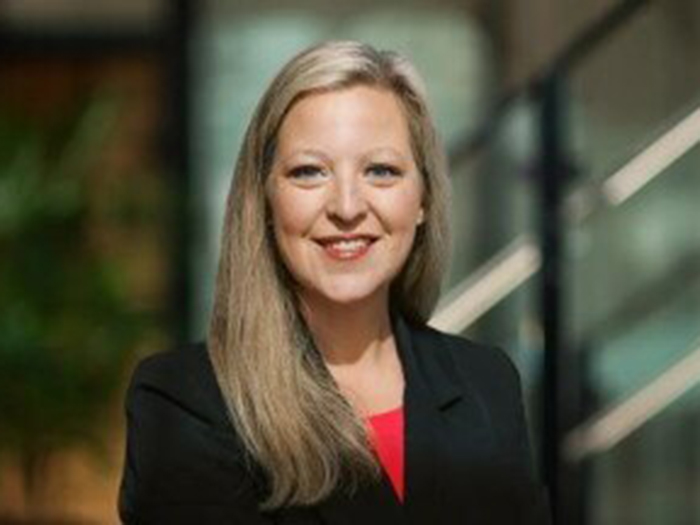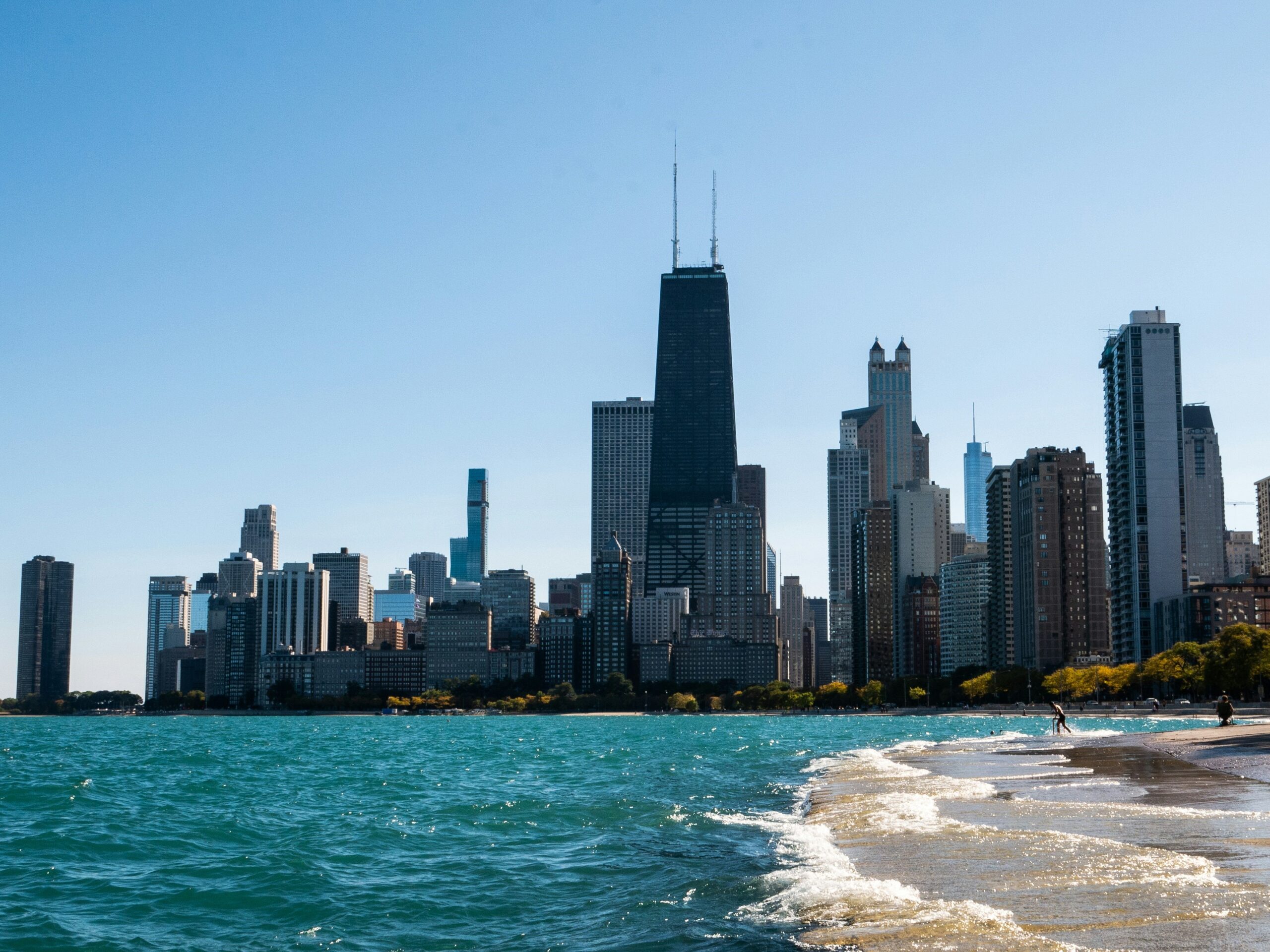Insuring the Climate Transition: 3 Key Actions the Net-Zero Insurance Alliance Is Taking to Globally Reduce Emissions

Scientists agree: We need to limit global warming to 1.5 °C above pre-industrial levels if we want to avoid the worst effects of global climate change.
It’s an ambitious goal that will take cooperation from nearly every country in the world and every sector of the global economy. A key part of that goal is reaching net-zero greenhouse gas emissions by 2050, meaning humans would only release into the atmosphere as much carbon as they take out through offsets.
To help encourage businesses across the global economy to reach that goal, a group of more than 25 insurers and reinsurers, representing more than 12% of world premiums, has formed the Net-Zero Insurance Alliance (NZIA), a United Nations-affiliated alliance determined to reduce any and all emissions related to the industry and its investing and underwriting portfolios.
“Without insurance, power plants would not be built and cargo ships would not sail,” Butch Bacani, program lead, United Nations environment program’s principles for sustainable insurance initiative (PSI), said in an email.
“Insurance solutions can de-risk the assets and activities that are driving decarbonisation — from the rapid expansion of renewable energy, zero-emission transport and electrification of industry, through to green buildings and nature-based solutions such as forests and wetlands which store carbon.”
What Is the Net-Zero Insurance Alliance?
NZIA got its start at July 2021’s G20 Climate Summit in Venice when it was launched by European carriers AXA, Allianz, Aviva, Generali, Munich Re, SCOR, Swiss Re and Zurich Insurance Group.
The organization is an outgrowth of two other UN organizations: PSI and the Net-Zero Asset Owners Alliance (NZAOA). It’s also a part of the Glasgow Financial Alliance for Net-Zero and the UN Race to Zero.
PSI was launched 10 years ago at the 2012 UN Conference on Sustainable Development as a collaboration between the United Nations and the insurance industry designed to promote sustainability within the sector.
NZAOA is a group of 74 international, institutional investors committed to transitioning their portfolios to net-zero emissions by 2050. That means they will no longer invest in companies with greenhouse gas emissions or through investing in carbon offsets. Many of the members of NZIA are also part of NZAOA.
“Net-zero targets have primarily been assessed and addressed from the perspective of investment and lending portfolios. Insurance has largely been viewed as an instrument to absorb financial shock and manage the risks associated with the physical impacts of climate change,” Bacani said.
“PSI has worked to broaden this perspective by also looking at insurance as an enabler of economic activities focusing on what assets and activities are being insured and their impacts on the environment and society.”
NZIA’s commitment is similar to NZAOA’s, Sheri Wilbanks, head of global risk management P&C climate and sustainability with NZIA Chair AXA, explained: “The main commitment of the alliance is quite simple. It’s to bring the insurance associated emissions of our insurance portfolios to net-zero by 2050 aligned with the Paris climate goals.”
3 Action Areas to Achieve Net-Zero Insurance
Bacani outlined three main challenges NZIA is looking to tackle in its early years: (1) Raising awareness of what it means to be a net-zero insurer; (2) engaging with stakeholders about the importance of a zero carbon economy; and (3) developing a methodology and tools for determining what makes a net-zero insurer.
“Since the launch of the NZIA in July 2021, significant progress has been made through NZIA’s six work streams in defining and shaping what it means to be a net-zero insurer, developing the strategies, approaches and methodologies and setting out how the insurance industry can influence wider change,” he said.
“There are still challenges that the NZIA must address in order to ensure that its commitments are credible, measurable and, most importantly, enable the real economy to achieve the overall goal of limiting global warming to 1.5°C.”
Here are some of the actions the organization has already taken to achieve these goals:
1) Raising Awareness
One question many in the insurance industry are grappling with is what does net-zero underwriting mean and what does it look like in practice.
When the insurance industry talks about reducing the amount of greenhouse gas the industry releases into the atmosphere, it’s often focused on limiting scope three emissions. Per the EPA, scope three emissions are those that are the result of activities from assets, not owned or controlled by the reporting organization, but that the organization indirectly impacts in its value chain.
This includes emissions from investments, and in the case of the insurance industry, those that occur in an insured’s line of business. When a carrier announces they’re no longer underwriting coverage for coal companies, for instance, that action would reduce their scope three emissions.
“Essentially what we’re calling insurance-associated emissions will be scope three emissions,” Wilbanks said. “[It’s] similar to how financed emissions are a scope three for either a bank or an asset owner.”
The reason for a scope three focus is that emissions from an insurer’s internal operations (that is, scope one and two emissions) aren’t actually that high. These emissions are primarily driven by the buildings an insurer owns, utility usage and company vehicles, according to a Boston Consulting Group report.
NZIA is bringing clarity to what net-zero underwriting looks like across sectors through its publications and the efforts of its member organizations. The alliance released a white paper in May that “articulates what net-zero means in the context of insurance and reinsurance underwriting portfolios,” Bacani said.
The white paper outlines nine actions member organizations can take to help insureds reduce their emissions. These actions include:
- Setting sector specific underwriting goals, especially in industries with high greenhouse gas emissions.
- Working with clients to develop decarbonization and net-zero emissions strategies.
- Creating new insurance and reinsurance products that support low- and zero-emissions technologies.
- Transitioning to environmentally sustainable claims management strategies.
- Adding net-zero and decarbonization criteria to risk management frameworks.
- Championing governmental policies that support the transition to a net-zero economy.
- Partnering with financial regulators, insurance associations and other nongovernmental organizations to promote the alliance’s goals.
- Working with others in the financial sector to support the alliance’s goals.
- Take into consideration the latest scientific findings when making underwriting and other business decisions.
Each member organization will take a slightly different path to implementing these goals as each of them will be facing slightly different client challenges and local government regulations.
“Clients are going to be facing some different challenges … as they proceed with their own net-zero goals,” Wilbanks said.
“Every insurer is going to have a slightly different view about what that means, and that’s really important to the alliance. It’s important to realize that each insurer is going to be applying different strategies and principles as to what net-zero underwriting means to them.”
2) Engaging with Stakeholders
One key to achieving net-zero insurance will be engaging with clients on the best decarbonization strategies.
Sectors like energy, transportation and construction will need to make some of the largest adjustments, but there is nary an industry that will be unaffected by the need for decarbonization.
“We know from the different reporting on greenhouse gas emissions, which sectors of the economy have the highest greenhouse gas emissions associated with them,” Wilbanks said. “But every industry will be impacted in some manner, in some way, shape or form.”
Insurers can help their clients develop decarbonization strategies, and they can offer risk management and transfer support when insureds eventually transition to carbon neutral business strategies.
Another big piece of client engagement will be education. Insurers must help their clients understand why a carbon neutral economy is necessary to prevent the worst effects of global climate change. Bacani points to the three day discussion “The PSI after 10 years: Amplifying Sustainable Insurance in the UN’s Decade of Action” as one way alliance members have worked to educate insureds on the importance of a net-zero economy.
3) Developing Methodology and Tools
A key determinator of the NZIA’s success will be its ability to track and meet its lofty goals.
That’s why the organization has partnered with Partnership for Carbon Accounting Financials (PCAF) to develop the first global standard to measure and disclose the greenhouse gas emissions associated with insurance and reinsurance portfolios.
The alliance is also working with the Science Based Targets Initiative (SBTi) to develop target-setting protocols for insurance underwriting portfolios, according to Bacani.
“This work is an important part of NZIA’s commitment to releasing a target-setting protocol within 18 months from the launch of the NZIA in July 2021 (i.e. by January 2023),” he said.
“Members of the alliance will then have six months to individually set interim science-based emissions reduction targets in line with the protocol.”
What’s Next for NZIA and Sustainable Insurance?
During the “The PSI after 10 years: Amplifying Sustainable Insurance in the UN’s Decade of Action” event, leaders from across the insurance industry reflected on the sector’s climate goals and what they can do to achieve them.
The event coincided with the one year anniversary of NZIA’s founding, making it a perfect opportunity to reflect on what the alliance has achieved so far and what it hopes to do in the future.
“Because we don’t see it right in front of our eyes every day, there is this … [idea] that we can kick the can a little bit longer down the lane,” Inger Andersen, executive director of the United Nations environment program, said during the event.
“But the truth is, obviously, we can’t, because climate change is here now.”
“With the Net-Zero Insurance Alliance, the industry has taken a critical step towards setting and more importantly, hitting its net-zero targets,” Mary L. Schapiro, vice chair of global public policy and special advisor to the founder and chairman of Bloomberg, added.
“Climate risk is financial risk … from banks to asset managers to asset owners, climate change is causing a reevaluation of all types of lending, investing and financing activities.”
One goal Renaud Guidée, group chief risk officer at AXA expressed for the alliance during the event was a need to innovate to stave off the worst effects of climate change. Innovation will allow for the development of new technologies, such as carbon capture, the process through which carbon is removed from the environment and sequestered.
These tools will make the transition cheaper, but they’ll also need insurance products to help manage the risks involved. Without these new tools, the world will be unlikely to meet the climate goals necessary to limit warming to 1.5 degrees Celsius.
“Twenty years ago in Johannesburg during the World Summit on sustainable development, [French] President Jacques Chirac made it clear: Our house is burning down and we are blind to it,” he said. “We need to both decarbonize and innovate. That goes hand-in-hand.”
If it wants to affect change, NZIA will also need to expand its footprint and include more insurers. The only current member from North America is a small insurer out of Bermuda, Wilbanks said, and there is no U.S. membership as of yet.
“It’s important for us within the alliance to do more outreach and education to the different U.S. insurers to make them aware about the alliance. Hopefully, if we could promote and share what the alliance is about, that’ll encourage more insurance companies to reach out to us,” she said.
Christian Mumenthaler, CEO of Swiss Re, said during the PSI event that many U.S. insurers are afraid of setting particular targets due to fears over future litigation if they fail to meet those goals.
Beyond encouraging NZIA membership, PSI is working on other ways to engage the U.S. insurance industry in the movement to combat climate change.
The organization is currently working with the California Insurance Commissioner to develop a comprehensive action plan comprised of risk management measures, insurance solutions and investments in order to build resilient and sustainable economic communities in the state.
Decarbonizing underwriting is only one small action the insurance industry will need to take as society responds to the effects of global climate change. As Bacani explained, “Net-zero insurance is focused on climate change mitigation, not adaptation.”
Consequently, insurers will likely need to implement policies that help clients adapt to the effects of climate change, like increasingly frequent and strong storms, that we’re already experiencing. Bacani points to PSI’s nature-positive insurance initiative as one way the industry is working towards climate adaptation.
“The aim of nature-positive insurance is for insurance portfolios to contribute to the protection of natural ecosystems — such as forests, wetlands and coral reefs — many of which are currently under threat due to unsustainable economic activities,” he said.
As for NZIA, the organization is focused on continuing to grow its membership and on setting aggressive and accountable goals to help insurers reach net-zero emissions.
“The NZIA is also engaging other market participants such as brokers, market bodies such as insurance associations, and key stakeholders such as the Glasgow Finance Alliance for Net Zero (GFANZ), insurance regulators and supervisors, and civil society organisations,” Bacani said.
“As the NZIA enters its second year, the alliance is focused on growing their global presence to include insurance leaders around the world.” &
Insuring the Climate Transition is a series that explores the critical role insurance will play in decarbonizing the economy and helping insureds adapt to the effects of global climate change. You can read other stories in the series here.










